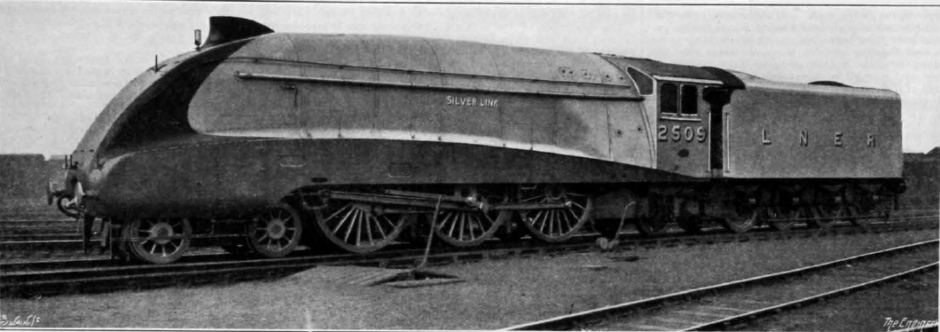
Whilst the majority of the article (based on details supplied by the London and North Eastern Railway Company (LNER)) focusses on the Silver Jubilee train - launched to commemorate the 25-year reign of King George V (who died just four months later) - it is the the 2509 Silver Link, the locomotive that pulled it, which is of the greatest significance in engineering terms.
Designed by celebrated railway engineer Sir Nigel Gresley, Silver Link was the first of the Class A4 locomotives, a futuristic-looking family of engines that remain Britain’s fastest ever class of steam locomotives. The most famous member of this illustrious group was the 4468 Mallard, which just a couple of years later (July, 1938) famously reached a world-record speed for a steam locomotive of 126mph.
The Class A4 locomotives were notable for a multitude of reasons. Internal streamlining to the steam circuit, a higher boiler pressure, and the inclusion of a combustion chamber in the fire box all played a part in its superior performance. But one of the key areas of innovation is also one of the most visible, a streamlined aerodynamically optimised design reportedly inspired by the racing cars of Ettore Bugatti.

Commenting on this aspect of the locomotive’s design The Engineer explained that one of the key innovations was the use of a horizontal wedge on the locomotive’s front end, that as well as improving aerodynamic performance also prevented smoke and steam from obscuring the driver’s view. “This would cause an upwardly rising current of air to sweep past the chimney and along the boiler barrel top and by its velocity would assist in carrying the steam and smoke clear over,” wrote the publication.
This attention to aerodynamic performance was also carried through to the train itself. “The exterior finish of the train is a distinct departure from the company's usual practice,” The Engineer reported. “Instead of the standard varnished teak, the bodies are panelled in No. 16 gauge steel and covered with aluminium rexine, the cornices, door and window facias and bottom beading being in stainless steel. Exterior projections have been reduced to a minimum, and in order further to reduce the air resistance a skirting has been fitted between the bogies extending from the bottom of the body to within 10" of the rail.”
READ THE ENGINEER'S ORIGINAL 1935 ARTICLE HERE
35 Class A4 locomotives were built, remaining in service until the early 1960s. Astonishingly, Silver Link itself was broken up for scrap in 1963 and today, only six of the famous locomotives remain. In 2013, these trains were reunited at the National Railway Museum in York, in an exhibition billed as the “Great Gathering”.

Red Bull makes hydrogen fuel cell play with AVL
Formula 1 is an anachronistic anomaly where its only cutting edge is in engine development. The rules prohibit any real innovation and there would be...